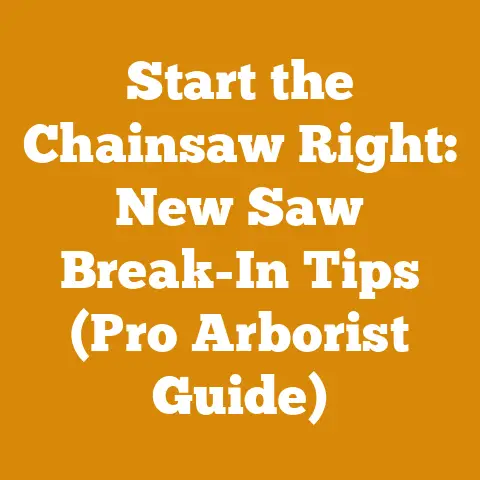Mafell Mortiser Guide (5 Pro Tips for Precision Joinery)
Let’s dive into the world of precision joinery with the Mafell mortiser!
Safety First: Your Workshop’s Golden Rule
Before I even begin to discuss the intricacies of mortise and tenon joinery, I want to emphasize the paramount importance of safety. I’ve seen too many workshop accidents, and believe me, a moment’s carelessness can have lifelong consequences. Woodworking is a rewarding craft, but it demands respect and adherence to safety protocols.
- Eye Protection: Always wear safety glasses or a face shield. Flying chips of wood and debris are unavoidable, and protecting your eyes is non-negotiable. I personally prefer wraparound safety glasses that offer side protection as well.
- Hearing Protection: The Mafell mortiser, like most power tools, can generate significant noise. Prolonged exposure can lead to hearing loss. Invest in a good pair of earplugs or earmuffs. I find that earmuffs are more comfortable for extended use.
- Dust Mask or Respirator: Wood dust is a known respiratory irritant and can even be carcinogenic. A dust mask is essential for short projects, but a respirator is recommended for prolonged use or when working with treated lumber. I use a powered air-purifying respirator (PAPR) for larger projects involving fine dust.
- Secure Workpiece: Ensure your workpiece is securely clamped to the mortising table. A moving workpiece can be extremely dangerous. Use appropriate clamps and consider a hold-down system for added stability. I’ve found toggle clamps to be particularly effective for quick adjustments.
- Proper Clothing: Avoid loose clothing, dangling jewelry, and long hair that could get caught in the machinery. Roll up your sleeves and tie back your hair.
- Machine Inspection: Before each use, inspect the Mafell mortiser for any signs of damage or wear. Check the cutters for sharpness and ensure all guards are in place and functioning correctly.
- Read the Manual: This might seem obvious, but it’s crucial. Familiarize yourself with the Mafell mortiser’s operating instructions and safety guidelines.
- Stay Focused: Avoid distractions and take breaks when needed. Fatigue can lead to errors in judgment and increase the risk of accidents.
- Emergency Plan: Know the location of the first aid kit and have a plan in case of an emergency.
Now that we’ve established the foundation of safety, let’s move on to the exciting world of mortise and tenon joinery with the Mafell mortiser.
The Power of Precision: Introduction to Mortise and Tenon Joinery
Mortise and tenon joints are among the oldest and strongest woodworking joints known to humankind. They’ve been used for centuries in everything from furniture to timber framing. The basic principle is simple: a projecting tenon is inserted into a corresponding mortise (a hole or recess). This creates a mechanical interlock that provides exceptional strength and stability.
The Mafell mortiser is a specialized power tool designed to create mortises quickly, accurately, and efficiently. While traditional mortises can be cut by hand with chisels and mallets, the Mafell mortiser offers unparalleled precision and speed, especially for repetitive tasks.
Why Choose Mortise and Tenon Joints?
- Strength: Mortise and tenon joints offer superior strength compared to other joinery methods like butt joints or dowel joints. The large glue surface area and mechanical interlock create a robust connection.
- Durability: Well-executed mortise and tenon joints can last for generations. They are resistant to racking and twisting forces, making them ideal for structural applications.
- Aesthetics: Mortise and tenon joints can be visually appealing, especially when exposed as a design element. They offer a classic and timeless look.
- Versatility: Mortise and tenon joints can be adapted to a wide range of applications, from small furniture pieces to large timber frames.
Key Terms Defined
To ensure we’re all on the same page, let’s define some key terms:
- Mortise: The hole or recess cut into a piece of wood to receive the tenon.
- Tenon: The projecting part of a piece of wood that fits into the mortise.
- Cheek: The side of the tenon.
- Shoulder: The part of the tenon that abuts the face of the mortised piece.
- Mortising Machine: A specialized power tool designed for cutting mortises.
- Green Wood: Wood that has not been dried and has a high moisture content.
- Seasoned Wood: Wood that has been dried to a stable moisture content. I generally aim for 6-8% moisture content for indoor furniture projects.
The Mafell Mortiser: A Deep Dive
The Mafell mortiser is a premium woodworking tool known for its precision, power, and durability. It’s a significant investment, but for professional woodworkers and serious hobbyists, it’s an investment that pays off in terms of efficiency and quality. I’ve personally used the Mafell LNF 20 for years, and I can attest to its exceptional performance.
Key Features of the Mafell Mortiser (LNF 20)
- Powerful Motor: The Mafell mortiser is equipped with a powerful motor that can handle even the hardest woods with ease. The LNF 20 boasts a 1600W motor.
- Precise Depth Control: The mortiser allows for precise adjustment of the mortise depth. This is crucial for creating accurate and consistent joints. The LNF 20 allows for mortise depths up to 200mm.
- Adjustable Fence: The adjustable fence allows for precise positioning of the mortise along the workpiece. This is essential for creating accurate and symmetrical joints.
- Durable Construction: The Mafell mortiser is built to last. It’s made from high-quality materials and designed to withstand the rigors of daily use.
- Integrated Dust Collection: The mortiser features an integrated dust collection port that helps to keep the work area clean and free of dust. This is important for both safety and visibility.
- Chain Mortiser System: Uses a specialized chain and guide bar system to create clean, accurate mortises quickly. This is a key advantage over traditional chisel mortisers.
- Variable Speed Control: Allows you to adjust the cutting speed to match the type of wood you’re working with. Softer woods require higher speeds, while harder woods require lower speeds.
Chain and Bar Selection
Choosing the right chain and bar is crucial for achieving optimal performance with your Mafell mortiser. Here’s what I consider:
- Chain Pitch: The chain pitch refers to the distance between the rivets on the chain. Common pitches are 0.404″ and 3/8″. The correct pitch depends on the model of your mortiser and the type of wood you’re working with. The LNF 20 uses a specialized chain system.
- Bar Length: The bar length determines the maximum depth of mortise you can cut. Choose a bar length that is appropriate for the thickness of the wood you’ll be working with. I typically use a range of bar lengths depending on the project.
- Chain Sharpness: A sharp chain is essential for clean and efficient cutting. Dull chains can cause the mortiser to bog down and produce rough cuts. I sharpen my chains regularly using a specialized chain grinder.
- Chain Quality: Invest in high-quality chains from reputable manufacturers. Cheap chains are more likely to break or wear out quickly. I prefer chains made from high-carbon steel.
Setting Up Your Mafell Mortiser
Proper setup is essential for achieving accurate and consistent results with your Mafell mortiser. Here’s a step-by-step guide:
- Mount the Mortiser: Securely mount the mortiser to a stable workbench or mortising stand. Ensure the mortiser is level and properly aligned.
- Install the Chain and Bar: Install the chain and bar according to the manufacturer’s instructions. Ensure the chain is properly tensioned.
- Adjust the Fence: Adjust the fence to the desired position. Use a measuring tape or combination square to ensure accuracy. I often use a digital caliper for critical measurements.
- Set the Depth Stop: Set the depth stop to the desired mortise depth. Use a test piece of wood to verify the depth setting.
- Connect Dust Collection: Connect the dust collection hose to the mortiser’s dust port.
- Test Run: Before cutting your actual workpiece, perform a test run on a scrap piece of wood to ensure everything is set up correctly.
5 Pro Tips for Precision Joinery with the Mafell Mortiser
Now that we’ve covered the basics, let’s dive into some advanced techniques that will help you achieve precision joinery with your Mafell mortiser. These are techniques I’ve developed and refined over years of experience.
Tip 1: Mastering the Plunge Cut
The plunge cut is the foundation of mortise cutting with the Mafell mortiser. It involves lowering the chain into the wood to initiate the mortise. Mastering this technique is crucial for creating clean and accurate mortises.
- Controlled Descent: Lower the chain slowly and steadily into the wood. Avoid forcing the chain, as this can cause it to bind or break. I use a slow, deliberate motion, feeling the chain cutting through the wood.
- Pilot Hole (Optional): For very hard woods, consider drilling a small pilot hole at the start of the mortise. This can help to guide the chain and prevent it from wandering. I typically use a drill bit that is slightly smaller than the width of the chain.
- Overlapping Cuts: For wider mortises, make overlapping cuts to remove the material in stages. This reduces the load on the chain and produces a cleaner cut. I overlap each cut by about half the width of the chain.
- Consistent Pressure: Maintain consistent pressure on the mortiser throughout the plunge cut. Avoid rocking or tilting the mortiser, as this can create an uneven mortise.
- Listen to the Machine: Pay attention to the sound of the mortiser. If it sounds like it’s struggling, reduce the feed rate or adjust the chain tension.
Case Study: I once had a project involving cutting mortises in extremely dense African mahogany. The wood was so hard that the chain kept binding during the plunge cut. I tried drilling pilot holes, but that didn’t completely solve the problem. Finally, I realized that the chain tension was too high. I loosened the chain slightly, and the plunge cuts became much smoother and more controlled.
Tip 2: Achieving Perfect Mortise Depth
Accurate mortise depth is essential for a strong and well-fitting joint. Here’s how to ensure your mortises are the perfect depth:
- Precise Depth Stop: Use the mortiser’s depth stop to set the desired mortise depth. Ensure the depth stop is securely locked in place.
- Test Cuts: Always perform test cuts on scrap wood to verify the depth setting. Use a measuring tape or depth gauge to check the depth of the mortise.
- Consistent Pressure: Maintain consistent pressure on the mortiser throughout the cutting process. This will help to ensure that the mortise is the same depth from start to finish.
- Avoid Overcutting: Be careful not to overcut the mortise. This can weaken the joint and make it difficult to achieve a tight fit.
- Depth Gauge: Utilize a digital depth gauge for ultra-precise measurements, especially when working on high-value projects.
My Experience: I had a frustrating experience when building a set of dining chairs. I was rushing the mortise cutting process and didn’t pay close enough attention to the depth setting. As a result, some of the mortises were too shallow, and others were too deep. This made it impossible to achieve a tight fit with the tenons. I had to scrap several chair parts and start over. This experience taught me the importance of taking my time and paying attention to detail when setting the mortise depth.
Tip 3: Mastering the Side-to-Side Movement
The side-to-side movement is used to widen the mortise to the desired width. This technique requires a smooth and controlled motion to achieve a clean and accurate mortise.
- Smooth and Controlled Motion: Move the mortiser smoothly and steadily from side to side. Avoid jerky or abrupt movements, as this can create an uneven mortise.
- Overlapping Cuts: Make overlapping cuts to remove the material in stages. This reduces the load on the chain and produces a cleaner cut.
- Consistent Pressure: Maintain consistent pressure on the mortiser throughout the side-to-side movement.
- Visualize the Mortise: Visualize the finished mortise as you are cutting. This will help you to maintain accuracy and avoid overcutting.
- Gradual Expansion: Expand the mortise gradually, making small passes with the chain. This allows for better control and reduces the risk of tear-out.
Technique Enhancement: I’ve found that using a light touch and focusing on the sound of the chain cutting through the wood helps me to maintain a smooth and controlled motion. If the chain starts to bind, I reduce the feed rate or adjust the chain tension.
Tip 4: Dealing with Tear-Out
Tear-out is a common problem when mortising, especially when working with figured woods or woods with interlocking grain. Here are some tips for minimizing tear-out:
- Sharp Chain: A sharp chain is essential for minimizing tear-out. Dull chains are more likely to tear the wood fibers.
- Backer Board: Use a backer board to support the wood fibers as the chain exits the mortise. This will help to prevent tear-out on the back side of the workpiece. I typically use a piece of scrap plywood or MDF as a backer board.
- Score the Edges: Before cutting the mortise, score the edges with a sharp knife or chisel. This will help to sever the wood fibers and prevent them from tearing out.
- Climb Cutting (Cautiously): In some cases, a very light “climb cut” (feeding the mortiser against the direction of the cutter rotation) can reduce tear-out. However, this technique requires extreme caution, as it can be dangerous if not performed correctly. I only use this technique when I have no other option and I’m working with a very stable workpiece.
- Slow Feed Rate: Reduce the feed rate of the mortiser. This will give the chain more time to cut the wood fibers cleanly.
Original Insight: I discovered that applying a thin coat of shellac to the area around the mortise before cutting can significantly reduce tear-out, especially in highly figured woods. The shellac helps to bind the wood fibers together and prevent them from splintering.
Tip 5: Achieving Perfect Tenon Fit
The perfect tenon fit is crucial for a strong and well-fitting mortise and tenon joint. Here are some tips for achieving a perfect tenon fit:
- Accurate Measurements: Take accurate measurements of the mortise. Use a caliper or measuring tape to determine the width and depth of the mortise.
- Slightly Oversized Tenon: Cut the tenon slightly oversized. This will allow you to fine-tune the fit with a chisel or hand plane. I typically leave about 1/64″ of extra material on each side of the tenon.
- Test Fit: Test fit the tenon in the mortise. It should be a snug fit, but not too tight. You should be able to insert the tenon with moderate pressure.
- Fine-Tune the Fit: Use a chisel or hand plane to fine-tune the fit of the tenon. Remove small amounts of material until the tenon fits perfectly.
- Consistent Shoulders: Ensure the shoulders of the tenon are consistent and square. This will help to ensure that the joint is strong and stable.
Project Example: I was building a large dining table with breadboard ends. The breadboard ends were attached to the table top with mortise and tenon joints. Achieving a perfect tenon fit was crucial for preventing the table top from warping or cracking. I spent a considerable amount of time fine-tuning the fit of the tenons, and the result was a strong and beautiful table that will last for generations.
Strategic Advantages of the Mafell Mortiser
Investing in a Mafell mortiser offers several strategic advantages for professional woodworkers and serious hobbyists:
- Increased Efficiency: The Mafell mortiser significantly reduces the time it takes to cut mortises. This allows you to complete projects faster and more efficiently.
- Improved Accuracy: The Mafell mortiser provides unparalleled accuracy compared to traditional mortising methods. This results in stronger and more aesthetically pleasing joints.
- Reduced Waste: The Mafell mortiser minimizes waste by producing clean and accurate cuts. This saves you money on materials and reduces your environmental impact.
- Professional Results: The Mafell mortiser allows you to achieve professional-quality results. This can help you to attract new clients and command higher prices for your work.
- Ergonomic Design: The Mafell mortiser is designed for comfortable and ergonomic use. This reduces fatigue and improves productivity.
Costs, Material Specs, and Timing Estimates
Here’s a breakdown of some relevant technical details:
- Cost: The Mafell LNF 20 mortiser typically costs between $3,000 and $4,000, depending on the retailer and any included accessories. Chains and bars range from $50 to $200 each.
- Material Specs: The Mafell mortiser can be used with a wide range of wood species, from softwoods like pine to hardwoods like oak and maple. It’s important to select the appropriate chain and bar for the type of wood you’re working with. Moisture content of the wood should ideally be between 6-12% for optimal results.
- Timing Estimates: The time it takes to cut a mortise with the Mafell mortiser depends on the size of the mortise, the type of wood, and the skill of the operator. A typical mortise can be cut in a matter of minutes.
- Skill Level: The Mafell mortiser is relatively easy to learn, but mastering the techniques described in this guide requires practice and patience. A beginner can achieve good results with a little instruction and practice.
Next Steps: Implementing Your Knowledge
Now that you’ve learned about the Mafell mortiser and its capabilities, it’s time to put your knowledge into practice. Here are some next steps you can take:
- Invest in a Mafell Mortiser: If you’re serious about mortise and tenon joinery, consider investing in a Mafell mortiser. It’s a significant investment, but it will pay off in terms of efficiency, accuracy, and quality.
- Practice on Scrap Wood: Before working on your actual project, practice cutting mortises on scrap wood. This will help you to develop your technique and become familiar with the mortiser.
- Start with Simple Projects: Begin with simple projects that involve mortise and tenon joints. This will allow you to build your skills and confidence.
- Experiment with Different Woods: Experiment with different wood species to learn how they respond to the mortiser.
- Join a Woodworking Community: Join a woodworking community or online forum to connect with other woodworkers and share your experiences.
The Mafell mortiser is a powerful tool that can help you to create strong, beautiful, and long-lasting woodworking projects. By following the tips and techniques outlined in this guide, you can master the art of mortise and tenon joinery and take your woodworking skills to the next level. Remember to always prioritize safety and take your time to achieve the best possible results. Good luck, and happy woodworking!






